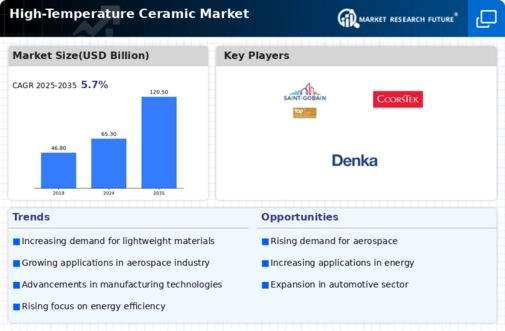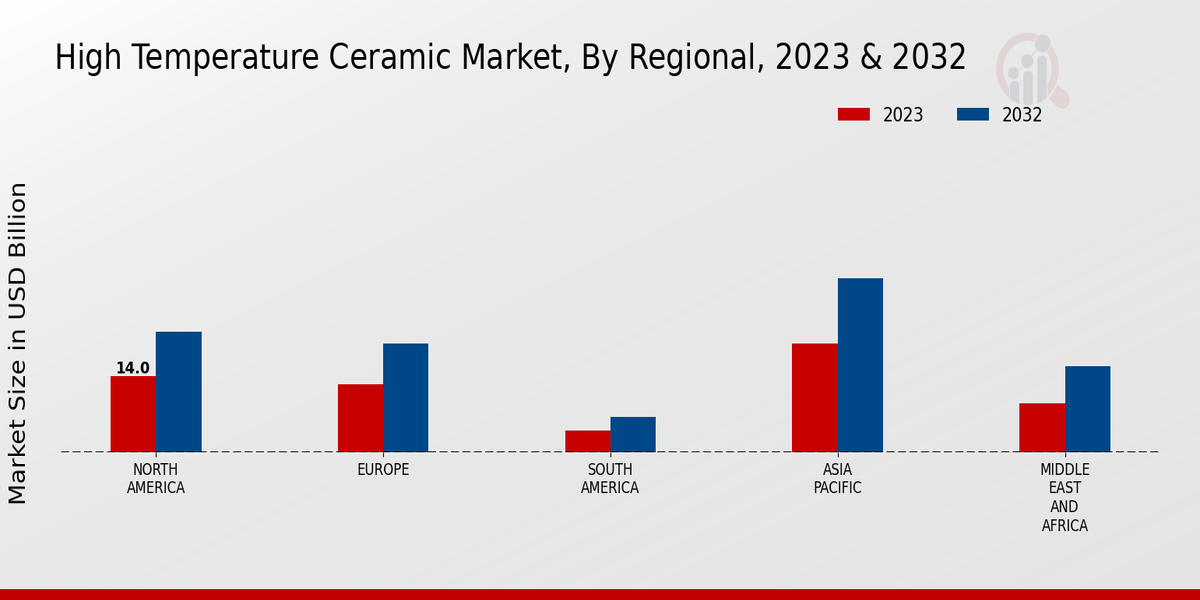Growing Focus on Sustainability
The Global High-Temperature Ceramic Market Industry is increasingly shaped by a growing focus on sustainability and environmental considerations. High-temperature ceramics are often more environmentally friendly compared to traditional materials, as they can reduce energy consumption and emissions in various applications. Industries are recognizing the importance of sustainable practices, leading to a shift towards materials that align with these values. This trend is expected to drive market growth as companies seek to enhance their sustainability profiles while maintaining performance. The integration of sustainable practices into manufacturing processes may further bolster the demand for high-temperature ceramics.
Advancements in Energy Generation
The Global High-Temperature Ceramic Market Industry is significantly influenced by advancements in energy generation technologies, particularly in the fields of renewable energy and nuclear power. High-temperature ceramics are essential for applications such as gas turbines and nuclear reactors, where they contribute to improved efficiency and safety. The increasing focus on sustainable energy solutions is likely to propel the market forward, as these materials enable higher operating temperatures and efficiencies. As a result, the market is projected to reach 120.5 USD Billion by 2035, reflecting a growing recognition of the role of high-temperature ceramics in energy generation.
Growing Demand in Aerospace Sector
The Global High-Temperature Ceramic Market Industry experiences a notable surge in demand from the aerospace sector, where materials must withstand extreme temperatures and pressures. High-temperature ceramics are utilized in components such as turbine blades and thermal barriers, which are critical for enhancing fuel efficiency and performance. As the aerospace industry continues to innovate, the need for advanced materials is expected to grow. This trend is reflected in the projected market value of 65.3 USD Billion in 2024, indicating a robust growth trajectory driven by technological advancements and increased production rates in aerospace applications.
Rising Applications in Automotive Industry
The Global High-Temperature Ceramic Market Industry is witnessing a rise in applications within the automotive sector, particularly in electric vehicles and high-performance engines. High-temperature ceramics are employed in components such as exhaust systems and brake systems, where they enhance durability and thermal resistance. As the automotive industry shifts towards electrification and performance optimization, the demand for advanced materials is expected to increase. This trend aligns with the anticipated compound annual growth rate of 5.72% from 2025 to 2035, suggesting a sustained growth trajectory driven by innovation and regulatory pressures for improved vehicle performance.
Increased Investment in Research and Development
The Global High-Temperature Ceramic Market Industry benefits from increased investment in research and development, which fosters innovation and the development of new materials. Governments and private entities are allocating resources to explore novel applications and improve existing high-temperature ceramics, enhancing their properties and performance. This focus on R&D is crucial for meeting the evolving demands of various industries, including aerospace, energy, and automotive. As new technologies emerge, the market is likely to expand, driven by the continuous improvement of high-temperature ceramics and their applications across diverse sectors.















Leave a Comment